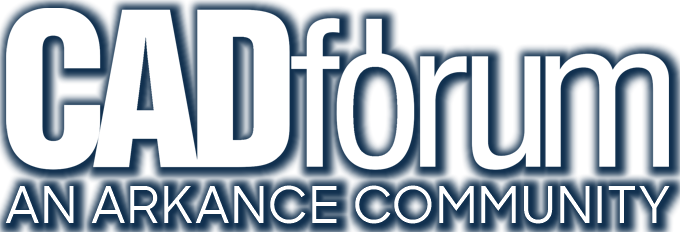
CAD discussion forum - ask any CAD-related questions here, share your CAD knowledge on AutoCAD, Inventor, Revit and other Autodesk software with your peers from all over the world. To start a new topic, choose an appropriate forum.
Please abide by the
rules of this forum.
This is a peer-to-peer forum. The forum doesn't replace the official direct technical support provided by ARKANCE for its customers.
How to post questions: register or login, go to the specific forum and click the NEW TOPIC button.
| Author |
 Topic Search Topic Search  Topic Options Topic Options
|
crosswinds 
Newbie

Joined: 05.Dec.2012
Location: Sweden
Using: DraftSight
Status: Offline
Points: 5
|
 Topic: Help me with this drawing Topic: Help me with this drawing
Posted: 05.Dec.2012 at 23:19 |
Hello everyone! Im trying to transfer a paper-drawing of a RC-airplane to a CAD file. I have had success with a couple of parts. But with this im not sure on how to draw. It is the curves that is on both sides of it, i dont know how to measure it, and i certainly dont know how to insert it into the CAD software. Iam using Draftsight, supposed to be the software that is closest to AutoCAD. Please see the image and any tips on how to do this is very much appreciated! //Daniel  |
 |
John Connor 
Senior Member

Joined: 01.Feb.2011
Location: United States
Using: AutoCAD 2018
Status: Offline
Points: 7175
|
 Posted: 06.Dec.2012 at 00:42 Posted: 06.Dec.2012 at 00:42 |
|
Do it by the grid method and transfer the measurements to CAD.
Another option would be to have it scanned, bring the image into Draftsight and trace over it. You would have to have at least one dimensioned line as a reference for accurate scaling.
Do you know anything about manual drafting? Some tracing paper and a beam compass could help in figuring things out.
Those curves could be arcs and/or splines.
|
|
"Humans have a strength that cannot be measured. This is John Connor. If you are reading this, you are the resistance."
<<AutoCAD 2015>>
|
 |
crosswinds 
Newbie

Joined: 05.Dec.2012
Location: Sweden
Using: DraftSight
Status: Offline
Points: 5
|
 Posted: 06.Dec.2012 at 20:47 Posted: 06.Dec.2012 at 20:47 |
 John Connor wrote: John Connor wrote:
Do it by the grid method and transfer the measurements to CAD.
Another option would be to have it scanned, bring the image into Draftsight and trace over it. You would have to have at least one dimensioned line as a reference for accurate scaling.
Do you know anything about manual drafting? Some tracing paper and a beam compass could help in figuring things out.
Those curves could be arcs and/or splines.
|
Thank you very much for your help! Im a bit unsure of what the grid method is about, tried to google it but was not lucky. The scanning option may be the best option maybe? Do i need to make it to a vector file before importing it to draftsight, or does draftsight have a function for this? Any more tips on that? Best regards Daniel
|
 |
John Connor 
Senior Member

Joined: 01.Feb.2011
Location: United States
Using: AutoCAD 2018
Status: Offline
Points: 7175
|
 Posted: 07.Dec.2012 at 00:08 Posted: 07.Dec.2012 at 00:08 |
|
Grid method: Tracing paper. Put a grid out it. Lay it over the part you want to reproduce. Take measurements. Transfer to CAD.
Scanning will produce a raster image. Doesn't DS have a feature where one can import or attach an image? Look it up in the Help file or in the user's guide.
Another option. Do you know anyone who has a digitizing board? They could "digitize" (i.e. - electronically trace) the image into a CAD program like AutoCAD.
Edited by John Connor - 07.Dec.2012 at 00:09
|
|
"Humans have a strength that cannot be measured. This is John Connor. If you are reading this, you are the resistance."
<<AutoCAD 2015>>
|
 |
John Connor 
Senior Member

Joined: 01.Feb.2011
Location: United States
Using: AutoCAD 2018
Status: Offline
Points: 7175
|
 Posted: 07.Dec.2012 at 00:14 Posted: 07.Dec.2012 at 00:14 |
|
Grid pattern for reproducing art. Same technique would apply.
http://www.draw-n-paint.com/Grids/Drawing.Grids.html
|
|
"Humans have a strength that cannot be measured. This is John Connor. If you are reading this, you are the resistance."
<<AutoCAD 2015>>
|
 |
crosswinds 
Newbie

Joined: 05.Dec.2012
Location: Sweden
Using: DraftSight
Status: Offline
Points: 5
|
 Posted: 08.Dec.2012 at 19:44 Posted: 08.Dec.2012 at 19:44 |
 John Connor wrote: John Connor wrote:
Grid pattern for reproducing art. Same technique would apply.
http://www.draw-n-paint.com/Grids/Drawing.Grids.html
|
Thank you for your help. But im still puzzled by this. Trying to figure out how i would do it by the grid method. Just cant get it. Do you have any example on how to do this?
|
 |
John Connor 
Senior Member

Joined: 01.Feb.2011
Location: United States
Using: AutoCAD 2018
Status: Offline
Points: 7175
|
 Posted: 09.Dec.2012 at 00:50 Posted: 09.Dec.2012 at 00:50 |
|
I don't have an example. The last time I used a grid to transfer a design was back in high school.
Create a grid on tracing paper. Use 1x1 or 2x2 squares. Tape it to your profile. Everywhere the profile intersects the grid take measurements.
Create a grid in AutoCAD of the same size. Transfer the measurements to this grid. Mark the intersections with a point (node). Now connect all the nodes with lines. Some of the lines you'll want to change to polylines and join together so you can curve fit them or create a spline.
OR....
Take a digital photo then bring the photo into AutoCAD using the ImageAttach command. Trace over the image. Take a known measurement and use it to scale the resultant electronic tracing so it matches the wing profile.
|
|
"Humans have a strength that cannot be measured. This is John Connor. If you are reading this, you are the resistance."
<<AutoCAD 2015>>
|
 |
heinsite 
Senior Member

Joined: 05.Feb.2009
Location: United States
Using: AutoCAD 2014
Status: Offline
Points: 640
|
 Posted: 09.Dec.2012 at 07:35 Posted: 09.Dec.2012 at 07:35 |
|
If it were my project I would take it to a professional reprographics shop and have the drawings scanned. Then I'd overlay those in a new drawing file, rotate and scale them properly, and trace very carefully. For me this would be much more accurate than a grid repro process. A digitizer would be ideal... but who even has one large enough for a project like this anymore?
Dave.
|
|
Dave Hein, P.E.
Hawaii District Engineer
Kona International Airport
AutoCAD Certified Professional
Autodesk Expert Elite
|
 |
crosswinds 
Newbie

Joined: 05.Dec.2012
Location: Sweden
Using: DraftSight
Status: Offline
Points: 5
|
 Posted: 10.Dec.2012 at 00:33 Posted: 10.Dec.2012 at 00:33 |
 heinsite wrote: heinsite wrote:
If it were my project I would take it to a professional reprographics shop and have the drawings scanned. Then I'd overlay those in a new drawing file, rotate and scale them properly, and trace very carefully. For me this would be much more accurate than a grid repro process. A digitizer would be ideal... but who even has one large enough for a project like this anymore?
Dave.
|
Thank you for your answer.
Actually i did have (some) success with the grid-method, but its very time consuming and not extrmely accurate as you say.
What method would you recomend to trace inside the CAD program once it have been scanned?
|
 |
heinsite 
Senior Member

Joined: 05.Feb.2009
Location: United States
Using: AutoCAD 2014
Status: Offline
Points: 640
|
 Posted: 10.Dec.2012 at 00:59 Posted: 10.Dec.2012 at 00:59 |
|
I use a lot of scanned as built (record) drawings, so my first steps are always the same. First, I very carefully rotate a long horizontal or vertical line in the scan so that Ortho mode is useful. Even if it's only a minor amount it's useful. You can do this easily by drawing an ortho line and then another using the scan. Check the angle, and if it's any measurable amount, rotate the fully drawing accordingly.
Once the rotation is satisfactory I will then scale the scan correctly. You need a known length for this, but once you have one the process is fairly simple.
At this point I would start with the horizontals and verticals. Since this these are airfoil shapes you may just have to do the best you can fitting arcs and splines. But if the original is at all accurate you should be able to get very close.
Have fun!
Dave.
Edited by heinsite - 10.Dec.2012 at 01:01
|
|
Dave Hein, P.E.
Hawaii District Engineer
Kona International Airport
AutoCAD Certified Professional
Autodesk Expert Elite
|
 |
 Discussion forum
Discussion forum CAD discussion forum - ask any CAD-related questions here, share your CAD knowledge on AutoCAD, Inventor, Revit and other Autodesk software with your peers from all over the world. To start a new topic, choose an appropriate forum.
CAD discussion forum - ask any CAD-related questions here, share your CAD knowledge on AutoCAD, Inventor, Revit and other Autodesk software with your peers from all over the world. To start a new topic, choose an appropriate forum.



![CAD Forum - tips, tricks, discussion and utilities for AutoCAD, Inventor, Revit and other Autodesk products [www.cadforum.cz] CAD Forum - tips, tricks, discussion and utilities for AutoCAD, Inventor, Revit and other Autodesk products [www.cadforum.cz]](/common/arkance_186.png)









 Help me with this drawing
Help me with this drawing Topic Options
Topic Options




 John Connor wrote:
John Connor wrote:


